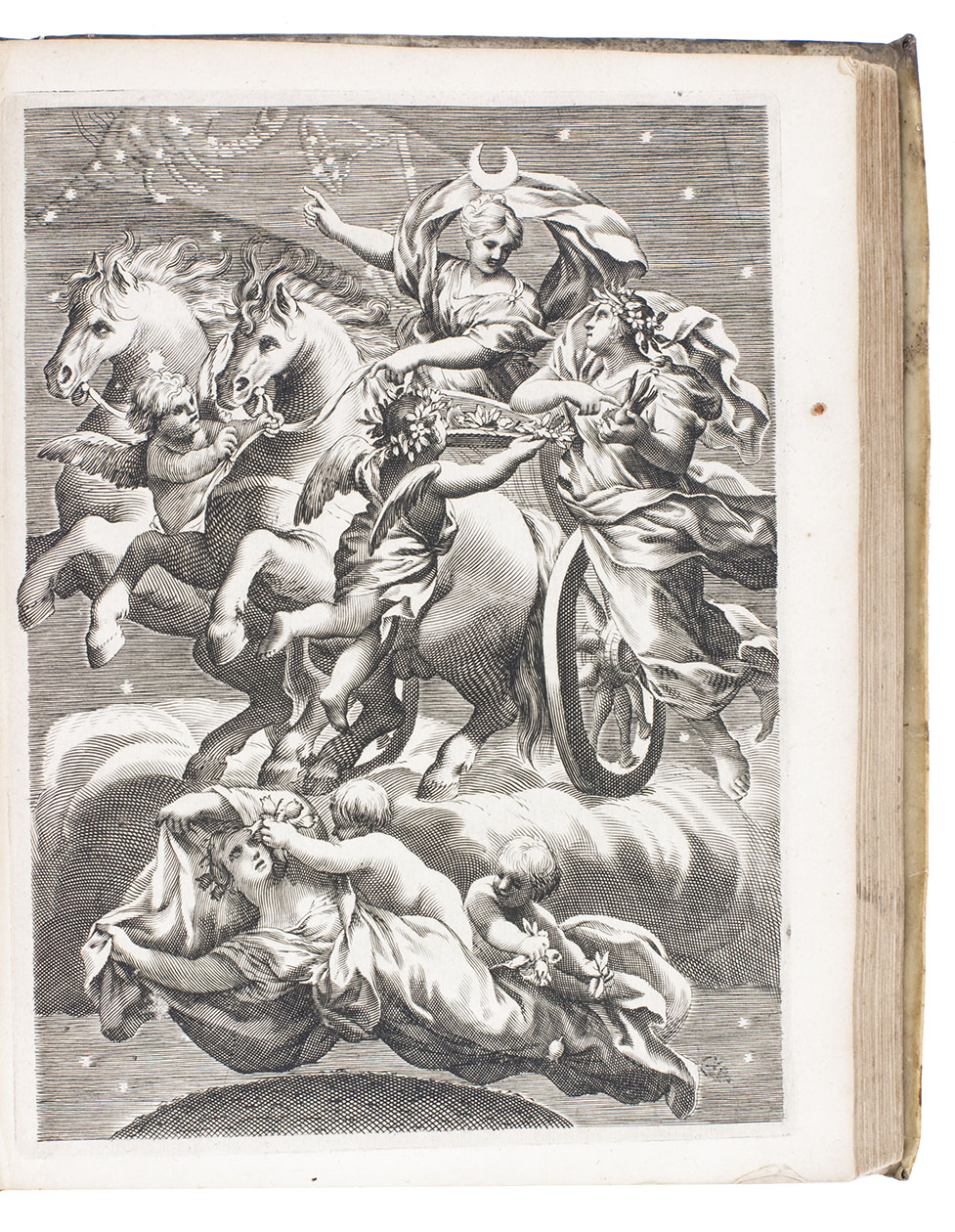FERRARI, Giovanni Battista and Bernhard ROTTENDORFF (editor).
Flora, seu de florum cultura lib. IV.
Amsterdam, Joannes Janssonius, 1646. 4to. With an engraved frontispiece with an engraved portrait of the author on its verso and 45 full-page engraved plates, including 31 botanical illustrations, 8 plans for gardens, and 6 allegorical illustrations. Further with an ornamental woodcut vignette on the title-page and woodcut decorated initials. Contemporary overlapping vellum, manuscript title on the spine, remnants of ties [48], 522, [12] pp.
€ 6,500
First Amsterdam edition of an "invaluable" (Masson) work on seventeenth-century Italian gardens. The first edition, written in Latin appeared in Rome in 1633 and an Italian translation appeared in 1638. The present work contains a newly edited version of the original Latin text, published by Janssonius in Amsterdam. The author, Giovanni Battista Ferrari (1584-1655), was an Italian Jesuit, botanist, orientalist and teacher at the Jesuit College in Rome. The editor, Bernhard Rottendorff (1594-1671), was a German doctor, humanist, and one of the most well-grounded, universal scholars of his time.
The Flora seu de florum cultura is divided into four books. Book one deals with the choice and preparation of the garden, listing several celebrated contemporary gardens as example. This is followed by a general discussion of several noted species of flowers, including daffodils, crocusses, hyacinths, cyclamens, anemones, turban buttercups, peonies, roses and shrubs. Part 3 deals with the different types of flowers, their appropriate place in a garden and their cultivation. In the fourth and final part, Ferrari discusses the various uses of flowers, for example in flower arrangements.
The plates, which were designed by Anna Maria Vaiani (or Vaiana, ?-ca. 1655), show 8 geometric garden layouts, 20 individual flowers and shrubs, horticultural tools, flower arrangements, cross-sections of vases showing how the stalks can be kept watered by capillary reaction, and a specially adapted case for transporting cut flowers. The remaining engravings are allegorical and were made by Johann Friedrich Greuter (1590-1662) and Claude Mellan (1595-1688) after drawings by Guido Reni (1575-1642), Andrea Sacchi (1599-1661) and Pietro da Cortona (1596-1669).
"Ferrari describes in his book how these compartments of the Duke's parterres were bordered with pianelle and planted with a mixture of two or three kinds of flowers. These were arranged so that one colour dominated in each compartment, giving the effect of an "orderly carpet of flowers"" (Masson, p. 70-71).
With a small, near contemporary inscription on the front pastedown ("1 Volume 84(?)") and a small contemporary inscription next to the woodcut vignette on the title-page ("JK"). The binding shows clear signs of wear, internally very slightly browned and very lightly foxed, with a small waterstain in the foot margin of the first 100 pages. BMC NH, p. 567; Harvard, Arnold Arboretum, p. 264; Masson, "Italian Flower Collectors' Gardens in Seventeenth Century Italy" in The Italian Garden (Ed. by D. Coffin, Dumbarton Oaks, 1972), pp. 63-80; Pritzel 2877; STCN 088050122 (8 copies); cf. Nissen, BBI 620; Oak Spring Flora 29.
Related Subjects:





















